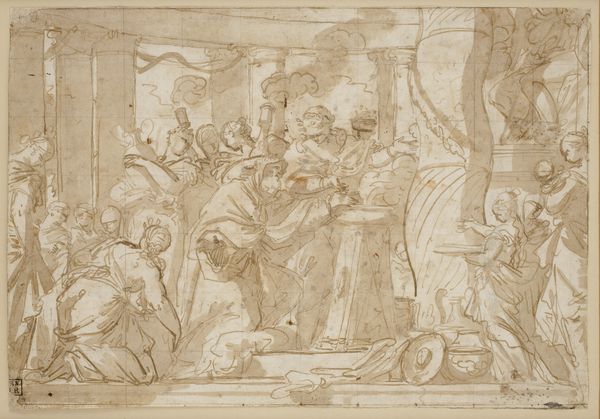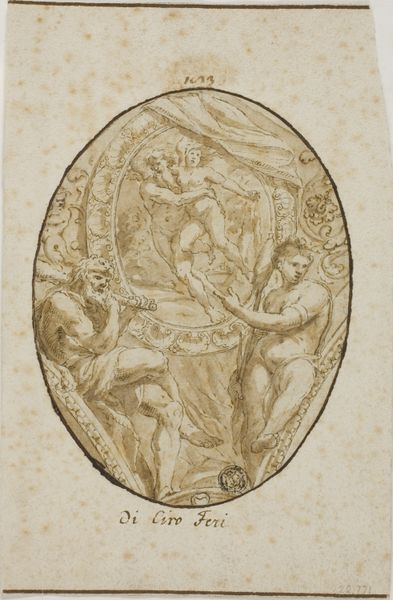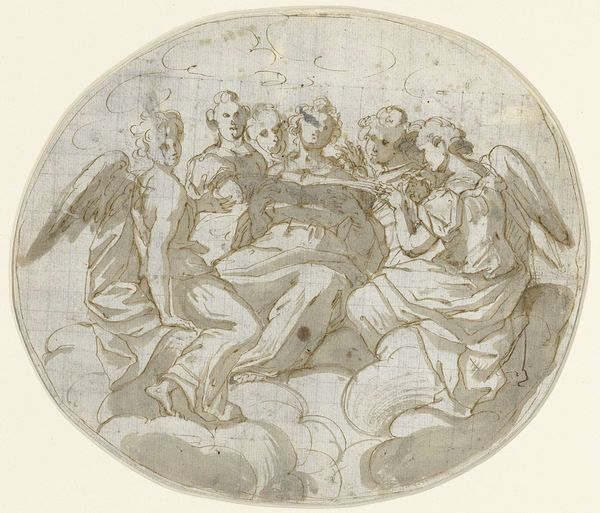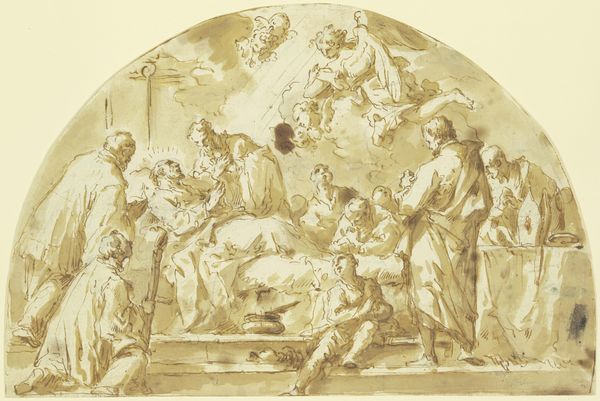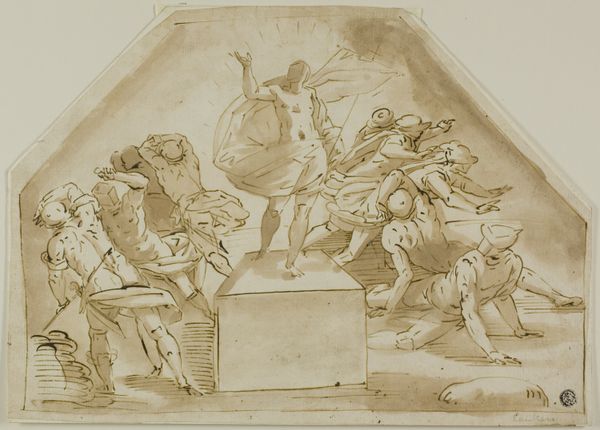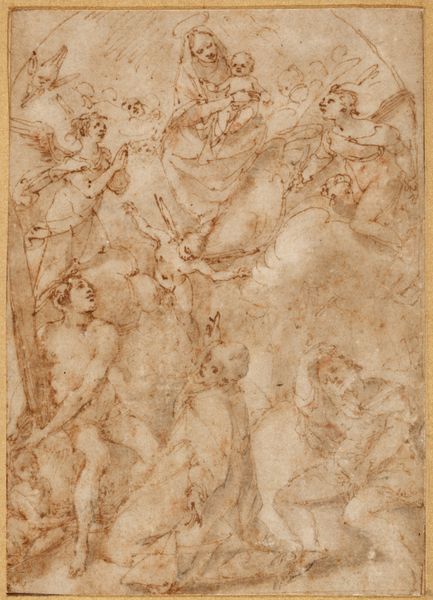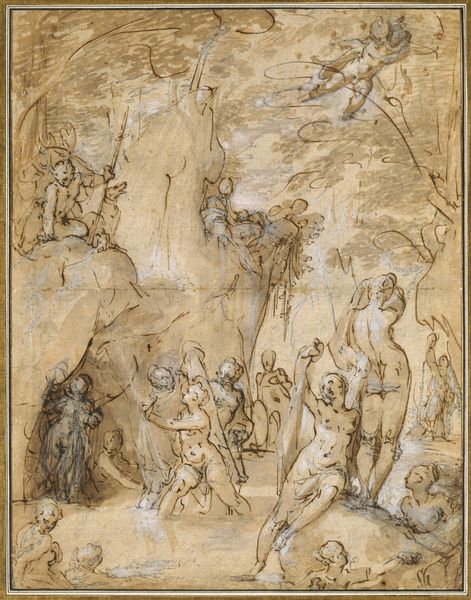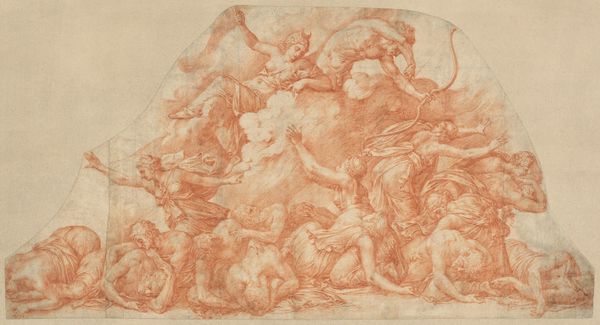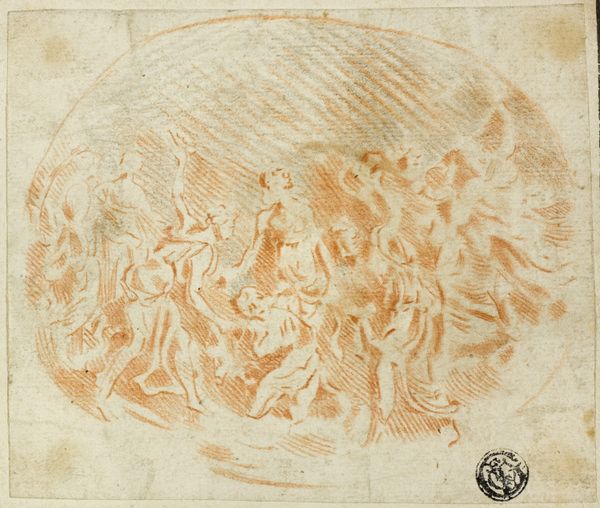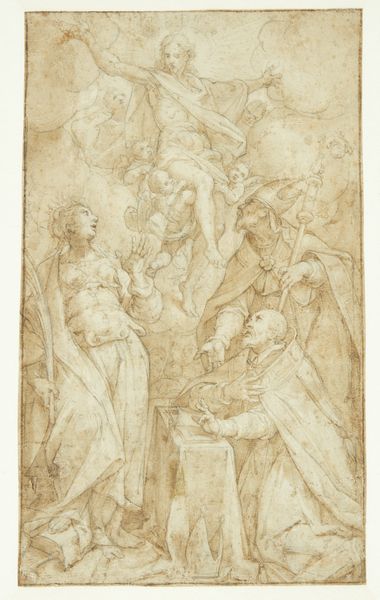
Study for Allegory of Two Quartieri of Florence 1563 - 1565
0:00
0:00
drawing, print, paper, ink, pen
#
drawing
#
allegory
#
ink painting
# print
#
pencil sketch
#
etching
#
mannerism
#
paper
#
ink
#
pen
#
history-painting
#
watercolor
Dimensions: 214 × 161 mm
Copyright: Public Domain
Curator: Here we have Giorgio Vasari’s “Study for Allegory of Two Quartieri of Florence," created sometime between 1563 and 1565. It’s a pen and ink drawing on paper. Editor: Well, my initial feeling is controlled chaos. All these figures tumbling across each other, all within the constraint of this…oval frame? It feels like an arena. Curator: That’s an astute observation. Allegories such as this would often utilize elaborate personifications and symbolic objects. Consider the architectural elements, suggestive of city walls, perhaps delineating the different "quartieri," or districts. Vasari aimed to translate Florence's sociopolitical structure into visual form. Editor: And the cherubs—are they celebrating? Waving flags, almost manically… it's festive but also feels…I don't know… performative. Are these putti representing something deeper, maybe civic pride, or perhaps even subtle hints of conflict? Curator: The ambiguity is precisely where its power resides. Angels or winged figures in art typically serve as intermediaries, messengers, or celebrants of divine favor. They contribute to the allegory by representing abstract virtues or historical triumphs associated with Florence’s quartieri. The flags add layers, representing identity and perhaps even factionalism within the city. Editor: It makes me wonder what occasion, real or imagined, Vasari intended to depict. Did he envision harmony, competition, or outright struggle between these Florentine neighborhoods? Curator: Vasari had a reputation for being a flatterer. His commissions depended on political connections and praise for patrons. While the scene suggests vibrancy, the allegory is likely designed to celebrate the glory of Florence, and, by extension, its rulers. It is fascinating to examine what gets amplified—or even erased—when visual narrative serves power. Editor: Looking closer at the drawing, the medium, and the sheer energy conveyed… It’s almost as if I can feel Vasari’s hand flying across the page, capturing fleeting ideas and raw, kinetic excitement. It's beautiful but propagandistic! Curator: It serves as an extraordinary lens through which we might analyze the visual strategies that underscore cultural values. Thanks for helping uncover more of its symbolism and story. Editor: The pleasure was all mine! I’ll be pondering what symbols persist in our own time.
Comments
No comments
Be the first to comment and join the conversation on the ultimate creative platform.
